Key takeaways:
- Pro-life advocacy encompasses a commitment to support families and promote adoption, extending beyond just opposing abortion.
- Feedback, both qualitative and quantitative, is crucial in refining advocacy strategies and connecting authentically with diverse audiences.
- Creating a safe space for dialogue and actively listening enhances the quality of feedback received, fostering collaboration and understanding.
- Adapting strategies based on feedback leads to more effective campaigns and deepens connections with supporters by addressing their needs and concerns.
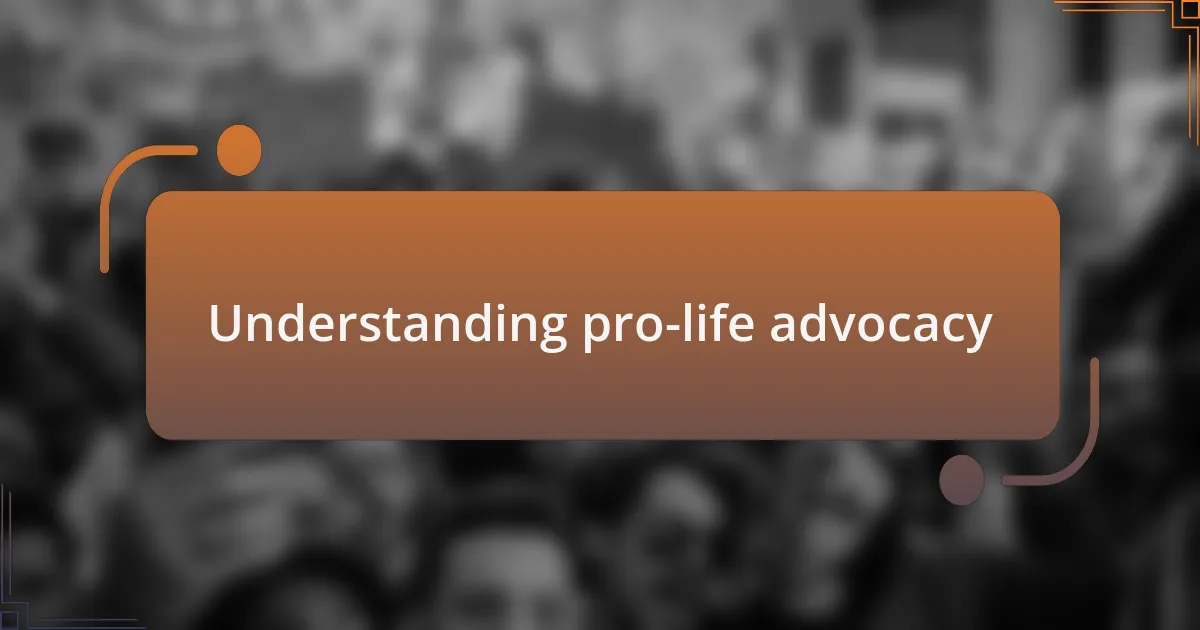
Understanding pro-life advocacy
Pro-life advocacy is rooted in the belief that every human life, from conception to natural death, possesses inherent value. When I first engaged with this movement, I was struck by the passion of those who champion this cause. It prompted me to think: what does it truly mean to defend life in all its forms?
Diving deeper, I realized that pro-life advocacy goes beyond just opposing abortion; it encompasses a commitment to supporting families, promoting adoption, and providing resources for both expectant mothers and their children. I remember attending a rally where stories from mothers who chose life echoed in my ears. Those heartfelt testimonials underscored the real, lived experiences behind the statistics and debates; life is complex, and every choice carries weight.
Ultimately, understanding pro-life advocacy requires empathy and openness to dialogue. It’s about asking ourselves how we can better support vulnerable individuals. For instance, when I encountered someone who had experienced a difficult pregnancy, I learned how deeply personal and nuanced their journey was. This taught me that fostering understanding and compassion is just as vital as promoting our stance on policies.
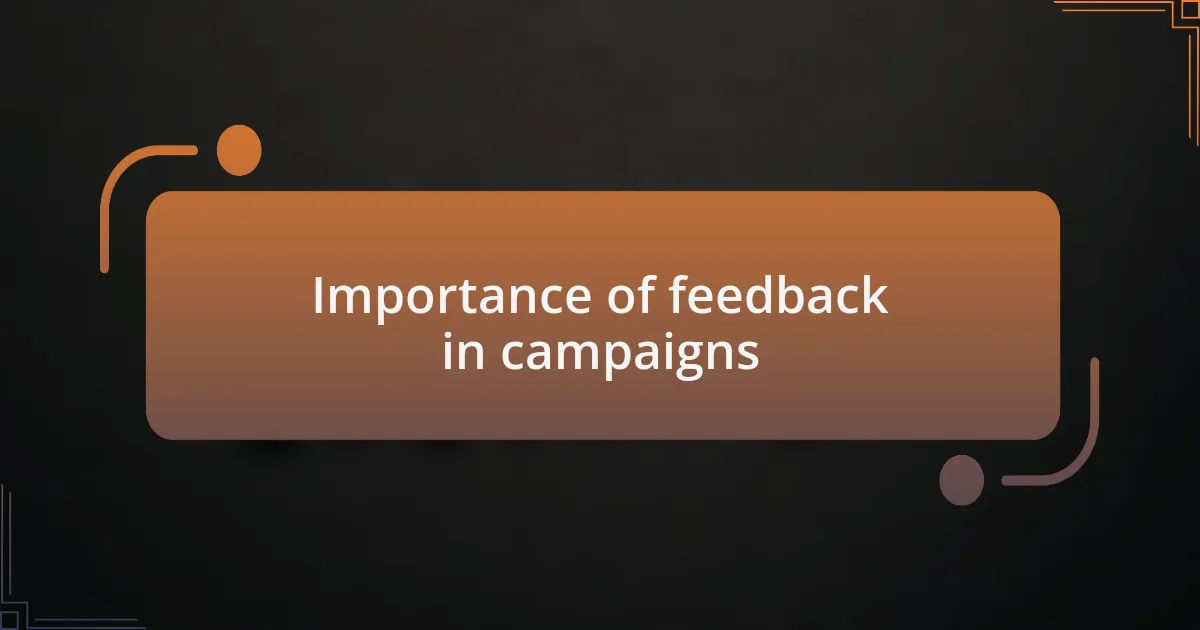
Importance of feedback in campaigns
When I think about the importance of feedback in campaigns, I often recall my early experiences gathering opinions from supporters and skeptics alike. It was eye-opening to realize that feedback wasn’t just a box to check; it was a lifeline. Each piece of input shaped our strategies, helping us connect more authentically with a diverse audience.
I’ve encountered situations where constructive criticism transformed our messaging entirely. For example, after a community event, I received insightful comments about the language we used. It was humbling to hear that some found it too technical or alienating. This feedback pushed me to simplify our communication, making our advocacy more approachable and relatable. Why should we complicate a message centered on compassion?
Moreover, I always ask myself: what if we didn’t embrace feedback? I believe our campaigns would become stagnant, losing touch with the very people we strive to serve. Engaging with responses not only strengthens our resolve but also fosters a sense of community and shared purpose among advocates and supporters, reinforcing the idea that we’re all learning together in this important journey.
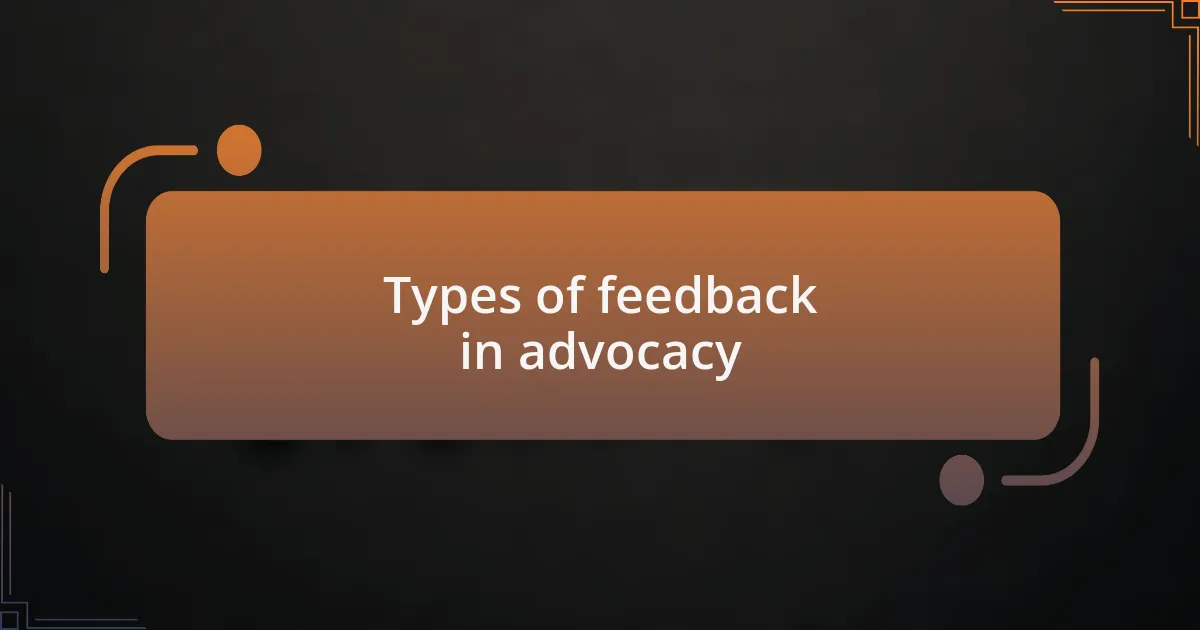
Types of feedback in advocacy
In advocacy, feedback often falls into several categories, each providing unique insights. I find that qualitative feedback, such as personal stories shared by supporters, can be incredibly powerful. These narratives not only highlight the emotional resonance of our message but also reveal areas where we can improve our outreach. When someone opens up about how they felt during a campaign, it reminds me that our work is deeply intertwined with individual experiences.
Quantitative feedback, on the other hand, offers a more numerical perspective. After an online campaign, we analyzed engagement metrics and survey results. It was illuminating to see the numbers behind our reach. Did they resonate with the call-to-action? This data helped me understand which aspects of our message were effective, highlighting what really connected and guiding future strategies. It reinforced a crucial lesson: sometimes, we need both numbers and stories to get the full picture.
Another type of feedback that I’ve learned to value is peer feedback from fellow advocates. In one collaboration, a colleague pointed out some overlooked details in our messaging. Initially, I felt defensive—after all, we had put so much effort into crafting the campaign. However, their fresh perspective ultimately made our stance clearer and more impactful. This experience taught me that embracing diverse viewpoints can yield unexpectedly enriching results. How often do we shy away from constructive input simply because it challenges our comfort zone?
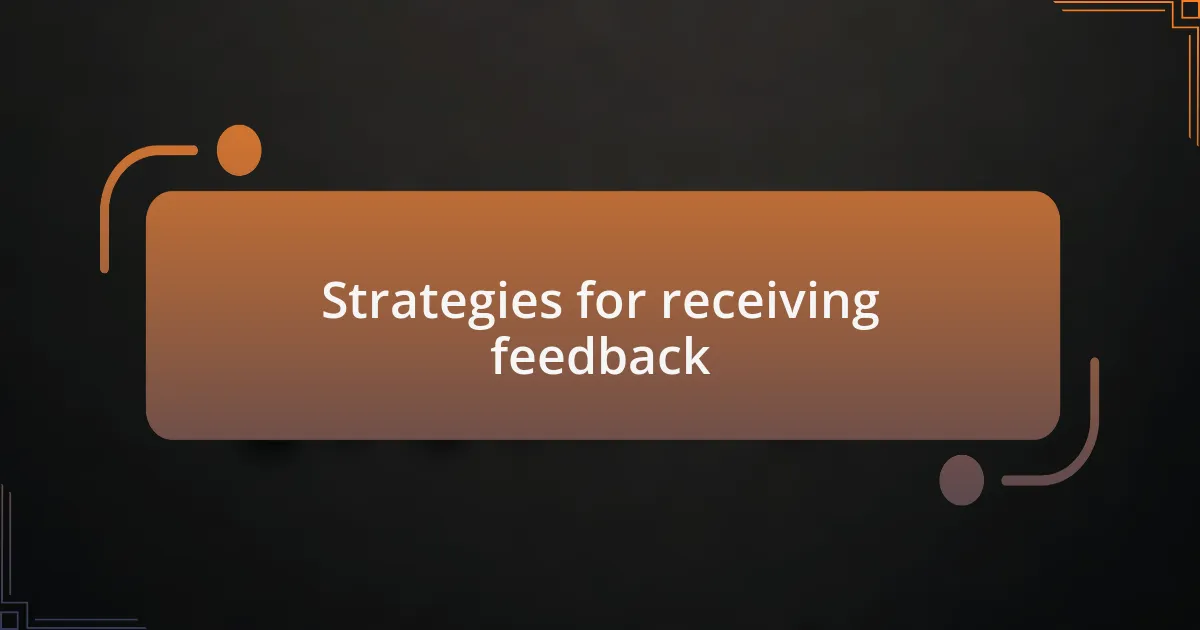
Strategies for receiving feedback
When it comes to receiving feedback, one of my go-to strategies is creating a safe space for open dialogue. I remember a campaign where I invited volunteers to share their thoughts during a brainstorming session. By framing it as a collaborative effort rather than a critique of individual contributions, I noticed everyone felt more comfortable expressing their thoughts. Isn’t it fascinating how a few simple adjustments to the atmosphere can lead to richer conversations?
Another effective approach is actively listening and paraphrasing what’s shared. Recently, during a debrief with my team, I made a conscious effort to repeat back what I heard from my colleagues. This practice not only confirmed that I understood their points correctly but also encouraged them to delve deeper. Have you ever noticed how this technique can spark further insights and clarify misunderstandings?
Finally, I’ve learned that timing matters greatly. After a campaign launch, feedback can feel overwhelming. My experience has shown that waiting a few days before seeking feedback allows emotions to settle, leading to more thoughtful reflections. It’s intriguing to think about how a brief pause can enhance the quality of input we receive. How could a little patience transform the way we respond to critiques?
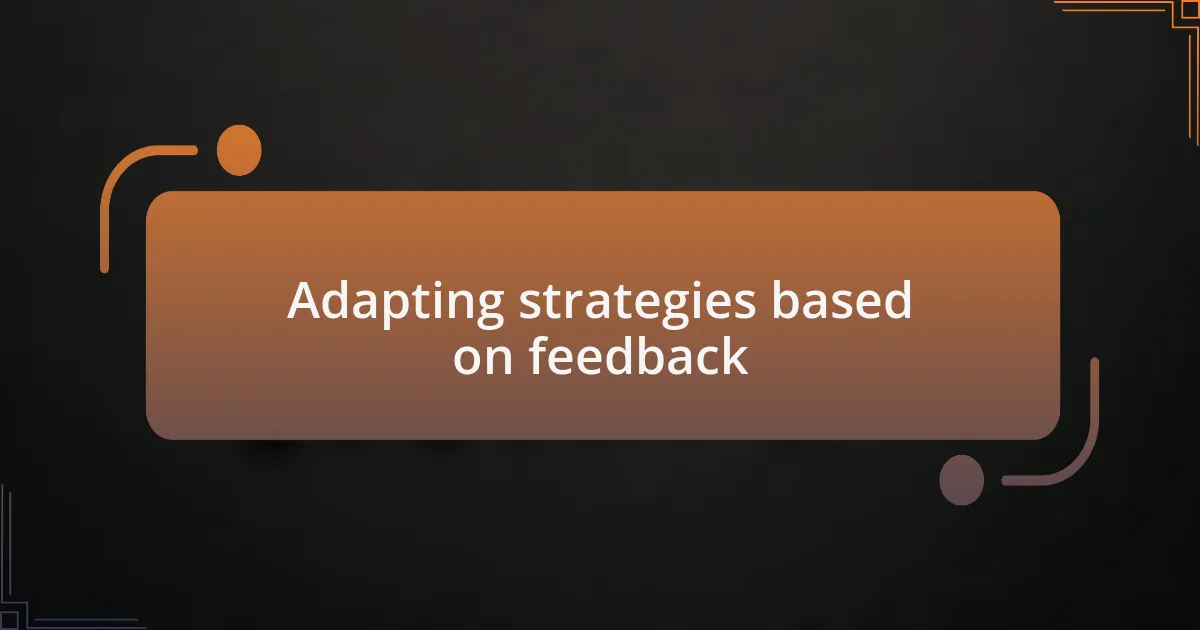
Adapting strategies based on feedback
Adapting strategies based on feedback requires a willingness to iterate and pivot. I recall a situation where the initial messaging in a campaign wasn’t resonating with our audience. Armed with constructive feedback, I took a step back and revised our approach, focusing on language that truly reflected the community’s values. Have you ever experienced a moment where a shift in perspective completely transformed your outreach?
Another instance was when we received pushback about our outreach methods. Instead of getting defensive, I embraced that feedback and sought additional input to refine our strategy. I found that changing our social media approach resulted in better engagement. The connection we made with the audience felt stronger, which made me realize the power of adaptability in enhancing relationships.
Moreover, I learned that flexibility isn’t just about changing tactics—it’s about truly understanding the audience’s needs. After listening to their concerns regarding accessibility in our materials, I decided to incorporate more visual elements. This adjustment not only made our content more relatable but also deepened my empathy for the diverse perspectives within the pro-life community. How often do we overlook the real impact of our choices on others?
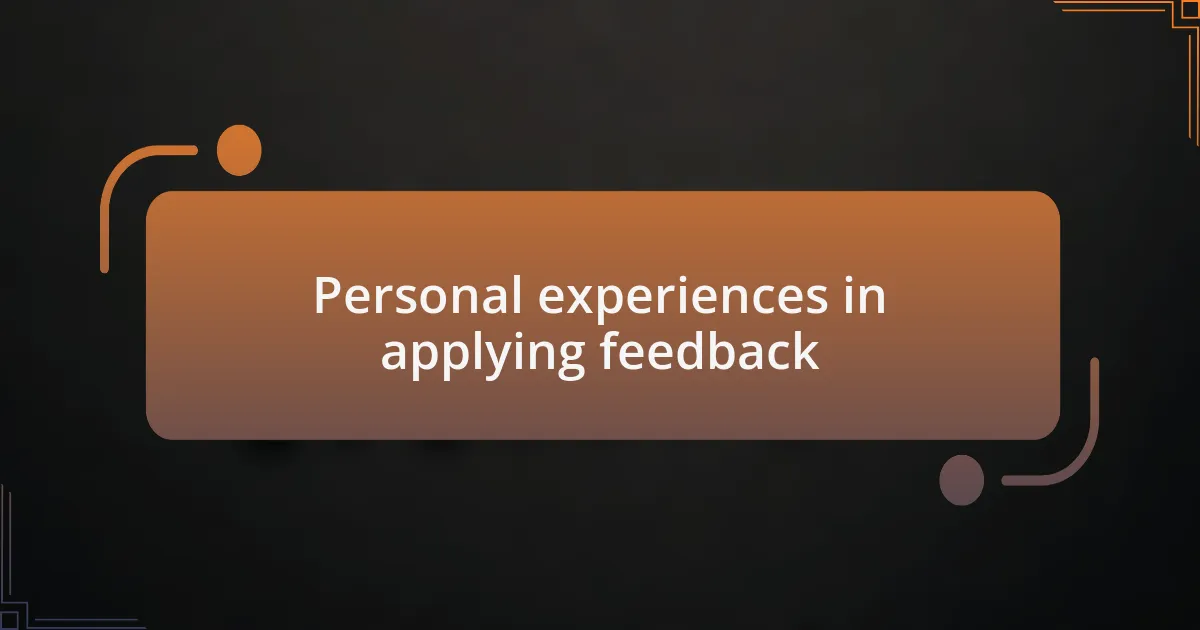
Personal experiences in applying feedback
During a campaign, I was once surprised by how a simple suggestion from a colleague sparked significant change. They noted that our statistics were informative but rather dry. I took that feedback to heart and began weaving stories around those numbers, highlighting real-life experiences. The result was a more emotionally resonant message that truly engaged our audience. Have you ever found that a small adjustment can make a big difference?
In another campaign, we received some tough critiques about tone and approach from our supporters. Initially, it felt overwhelming—like I had missed the mark completely. However, embracing this feedback helped me refocus our messaging not just to be advocacy-driven, but also warmly inviting. It was a rewarding experience when I saw how our words could create a more inclusive dialogue. Isn’t it amazing how honesty can lead to deeper connections?
Additionally, I’ve found that seeking feedback isn’t a one-time event; it’s an ongoing process. Periodically revisiting our strategies for community engagement has guided me in making more thoughtful adjustments, like launching feedback surveys. This practice not only encouraged participation but also empowered individuals to voice their needs. Have you ever realized that asking for opinions can transform not just your work, but the very foundation of your mission?
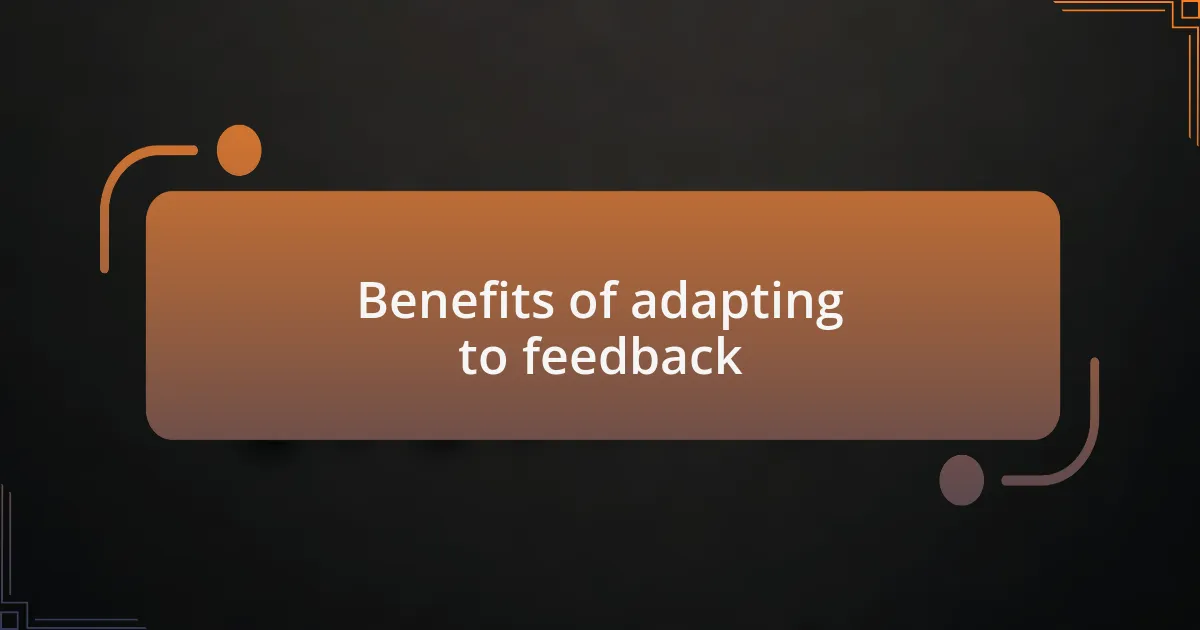
Benefits of adapting to feedback
Adapting to feedback has a profound way of enhancing campaign effectiveness. I recall a particular instance when I sought input from our audience after a campaign launch. The insights they provided were invaluable, showing me not just what resonated but also what fell flat. It was eye-opening to see how directly engaging with our supporters allowed us to refine our message and strengthen our impact. Have you experienced that moment when feedback shines a light on what truly matters to your audience?
Moreover, the reassurance that comes from knowing your approach is recalibrated based on feedback fosters a greater sense of community. I remember reworking a key element of our communication style after hearing concerns from several contributors. Their willingness to share their thoughts made me feel like we were working together toward a shared goal. It transformed not just my strategy, but also the dynamics of our collaboration. Isn’t it rewarding when people feel valued enough to contribute their perspectives?
Finally, being open to criticism teaches resilience and adaptability—essential traits in advocacy work. After facing mixed reviews on a campaign, I chose to reflect on the constructive comments, rather than dwelling on the negatives. This shift in perspective didn’t just enhance my approach but also strengthened my resolve to improve continuously. I now view feedback as a vital part of my growth rather than a setback. Have you considered how embracing feedback might empower you on your journey?